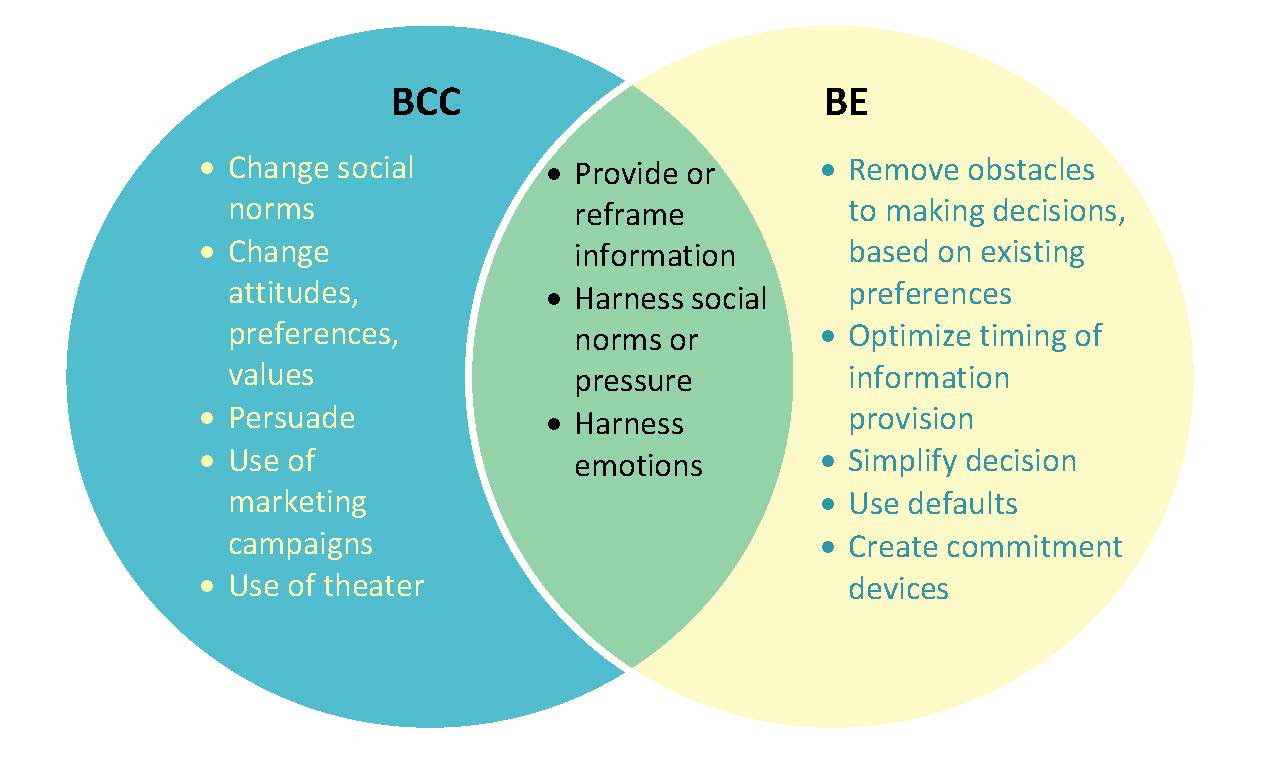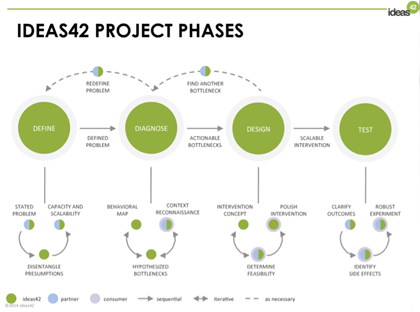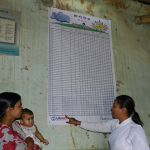Innovation Series Webinar on Behavioral Economics
Behavioral economics (BE) is a discipline that uses insights from psychology and neuroscience to provide a deeper understanding of human decision-making and actions than standard economic reasoning does. By identifying, understanding and tackling the behavioral factors that prevent development programs from being as successful as they could be, BE can help improve program implementation.

Source: http://beri-research.org/our-framework/behavioral-economics-or-behavioral-change-communications/
In the fifth installment of HC3’s Innovation in Health Communication Webinar series, the presenters focused on defining BE and how it interacts with the field of social and behavior change communication (SBCC). The session was moderated by John Strand, Director of Social Marketing and Communication at FHI 360.
Dr. Saugato Datta, Vice President at Ideas42 introduced Ideas42 and how it uses BE to define, diagnose, design and test solutions for development programs. Dr. Datta said BE can be used to design interventions that facilitate the making of decisions, such as those related to service delivery, like when a provider chooses about what family planning options to provide or highlight. But it can also be used for following through on decisions; for example, bridging intention-action gaps, such as those that prevent women’s fertility choices from being realized.
The following illustrates Ideas42’s approach to solving problems with development projects:
Joan Robertson, Senior Technical Advisor at JSI provided an implementation perspective to the webinar related to her work with reproductive health and family planning (RH/FP). Robertson brought key insights as to how BE relates to SBCC, including the importance of examining not only what influences decision-making but also what influences action to better design interventions. Examples from health programs in Ghana, Indonesia, Kenya, Malawi and the Philippines were cited. Robertson closed by noting Melinda Gates’ article from earlier this year on reducing newborn deaths, which illustrated the importance of finding out what cultural norms or other circumstances may be working against SBCC programs, and added that an enabling environment is important to make BE work.
Ellie Turner, Program Manager for the Behavioral Economics in Reproductive Health Initiative (BERI) at the Center for Effective Global Action (CEGA) at UC Berkeley, asked the audience to look at non-market-driven factors. She noted that a lot of programs address “market failures” – access, cost, information, supply workforce – but BERI looks beyond these to see the non-market-driven factors that prevent individuals from acting in their best self-interest in reproductive health decisions. Examples mentioned included:
- Over-confidence
- Beliefs
- Persuasion
- Social Pressure
- Social norms
Turner also shared that BERI will be releasing a white paper in the near future that features a framework to help identify challenges that may be ripe for interventions.
The session concluded with a short Q&A session and closing remarks by Marcie Cook, Regional Director of Asia and Eastern Europe at PSI. Cook emphasized the benefits of leveraging this mulch-disciplinary approach to look at SBCC through a different lens. Behavioral economics can inform our understanding of decision-making, which is integral to program design.
The complete list of speaker presentations along with the recorded webinar is listed in the HC3 Project Materials section.
So what do you think?
- Is Behavioral Economics the next silver bullet?
- How do we avoid potential pitfalls form BE interventions?
- Potential challenges to designing interventions through a BE lens for scale?
Let us know on the Health Communication Innovation Webinar Series group on Springboard for Health Communication, a new social network for health communication professionals.









Leave a Reply
Want to join the discussion?Feel free to contribute!